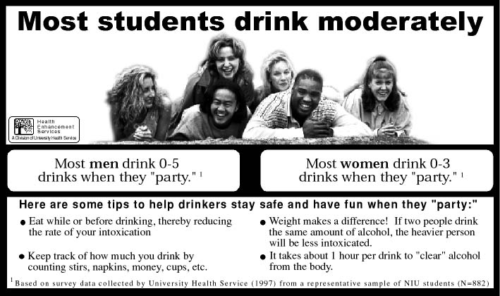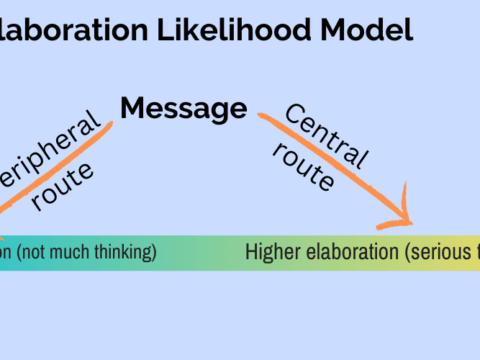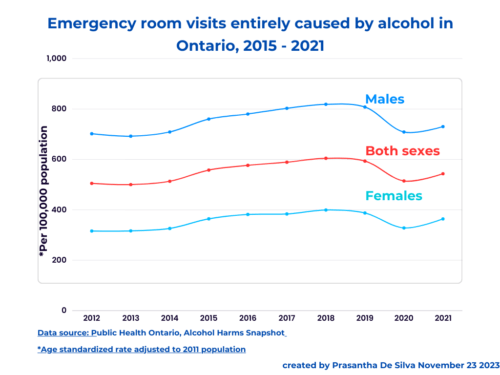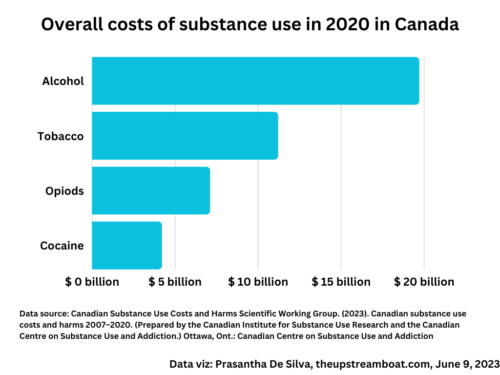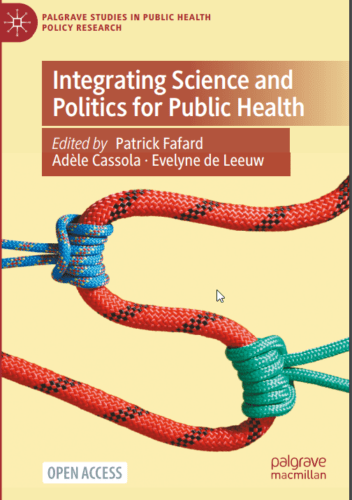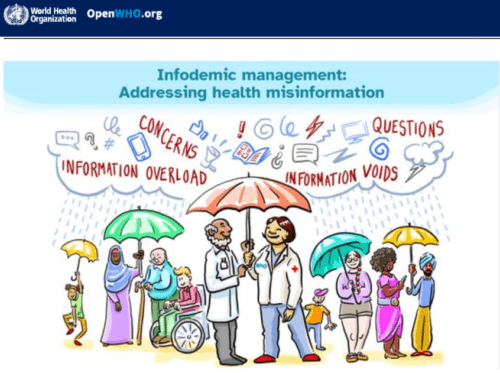In 1989, Northern Illinois University wanted to reduce students’ high-risk (binge) drinking behaviour. Its researchers adopted the social norms theory to craft messages for their social marketing campaign. This is their story.
This post refers to Michael Haines’s research paper published in 1996. and the Social Norms National Research and Resources website.
Step 1: They began with a situational analysis.
They surveyed students for their perceptions and drinking behaviour when partying in 1988. Of all students, 69.7 per cent of students perceived that they binge drink (more than five drinks) when partying, But, in reality, only 43 per cent of them admitted that they did that. So, they found a perceived – practice gap.
Step 2: Then, they framed messages to correct the misperceptions.
Message framing
Following is one of the messages they crafted to highlight the campus norm.
The key message was, “Most students drink moderately”.
Some of its supporting messages were;
- “Most NIU students (55 per cent) drink five or fewer drinks when they party”.
- “Most students drink five or fewer drinks when they party”
- “Most men drink 0-5 drinks and most women drink 0-3 drinks when they party”.
More recently, they have added some tips for safe drinking practices.
Following was one of the actual posters; Other than the message itself, they practised other rules when choosing visuals and other design aspects of the post.
Haines mentions the rules they followed when crafting the message.
They;
- Kept the message simple using plain language. (Read more about how to use plain language in message framing).
- Used it consistently.
- Told the truth.
- Highlighted the positive norm (in this case, it is moderation).
- They highlighted the word “most” to make it easy to remember.
- This may not apply to settings where the accepted norm is abstinence).
- They did not use patronising sentences such as “do nor drink too much”.
You can find several messages similar to the above with visuals at the end of this post. All these were norms-based.
Compare the norms-based messages with these mainstream media messages
Mainstream media loves to sensationalize the facts; At the time they reported the survey findings as follows:
“Binge drinking is widespread”
“Almost half of all students surveyed at 140 US colleges admitted to “binge” drinking, leading to everything from fights to vandalism”.
Ensuring the messages’ credibility
The message’s credibility matters. Often, local data becomes more relevant and engaging than national data. Therefore, the survey data from a credible source carry more value. delivering the messages by either a physician or a healthcare worker/educator/ nurse will enhance the message’s credibility.
Regarding visuals, using students similar to the target population resonates the message with them.
Unintended consequences of norms-based messages
The project managers become mindful of the unintended consequences of norms-based messaging. This can happen in any public health intervention project. Some of those that Haines mentions are;
- Administrators might see, mistakenly, that binge drinking is not a big problem.
- Others might see that this is an attempt at denial by campus administrators.
We need to take proactive measures to meet these potential challenges. It is important to emphasize that we will take seriously any alcohol-related adverse event.
Step 3: They decided on the message delivery methods to the exact target population.
Although seemed simple, it is not so.
Print media
By the time this study was carried out, print media was mainstream, unlike today’s social media space. Therefore, they prepared campus (portrait size)/bus (landscape size) posters, billboards, bulletin boards, campus newspaper ads, handouts, and flyers.
The dosage also matters; they changed the posters 8 times a year. And, they kept the momentum with letters to the editors and articles. Furthermore, they gave a $5 incentive if the student representatives found the poster up in a student’s room. Concerning newspaper ads, they placed two ads weekly.
Interpersonal methods
The intervention also included guest lectures, town meetings, group discussions etc. However, these methods are costly and time-consuming. Haines cautions that the main hurdle in such methods is to reach the real target audience who should hear the message unless such events are mandatory. This is because students who show the greatest interest attend such meetings and they are the ones who drink the least.
In contrast, Haines found evidence that those who drank most were likely to read ads and flyers. However, they used interpersonal methods to pre-test messages.
A quick tip:
We can survey 20-50 students to find whether our message reached the intended audience.
Methods to ensure message retention
Not only does the message need to be delivered to the correct target audience, but we need to make sure that they remember and internalise it. Other than the message crafting criteria, the delivery frequency at the adequate dosage also matters.
Steps to make the message sticky
- Increase the delivery frequency,
- Keep the message fresh by delivering it in different formats: posters, flyers, buttons, display adverts, ads etc.
- Delivery consistency: During the fall semester, the campaign released three media exposures on three days weekly – flyers, a display ad, and a classified ad. They have maintained high visibility throughout the semester.
- Rewarding people who remember the message.
- Dramatising with the slogans;
- They asked in the events, “Who knows how many drinks most students drink when they party? The first student with the correct answer would receive a gift and the rest received flyers with the message that ” most students drink five or fewer drinks when they party”. If no one knew the answer they got the flyer with the same message. This ran for two weeks in the fall and another two weeks in the spring semester.
Targeting sub-cultures
Although the campaign messages targeted 23,000 students, the researchers found that in some subcultures, students exaggerate their drinking behaviour depending on how they value the drinking culture. The messages for these subcultures may have to be tailored to them. Understanding subcultures requires specific surveys, meetings, and focus group discussions with them.
Types of social norms
We know social norms shape our behaviour. It carries a contagious effect. Either good or bad, it spreads. There are two types of social norms: Descriptive and injunctive. The term, descriptive refers to the norms we see what others are doing. in contrast, “injunctive” refers to the norms we think what should be done.
Did it work?
Michael Haines’ following two slides reveal the intervention’s impact. The slides are from his presentation at sliderserve.com. We can find that the student’s perception of heavy drinking declined from 69.3 per cent in 1989 to 52.7 per cent in 1991, two years after the intervention. During the period, their actual heavy drinking reclined from 44.8 per cent to 37.2 per cent. And, the reporting of fighting reduced from 29.5 per cent to 24 per cent while injury to others from 19.6 per cent to 13.4 per cent.
The decline continued over the years.
There are situations when norms-based interventions do not work.
The social norms theory does not work in all situations. Following are some of those;
- When healthier behaviour is not the norm. For example, if the survey finds that most binge drink, we cannot use the normative messages.
- When the cultural norm is abstinence, not moderation.
- When the survey says that high-risk drinkers perceive the actual high-risk drinking behaviour.
- When we reach the “floor”; the social norms theory does not work for those immune to social pressure. For example, those who are dependent on alcohol and anti-social groups will not respond to social norms. We need different approaches to them.
What is the latest evidence about the success of norms-based interventions?
Christine Walter et al. (2021) reported that social norms interventions and systematic reviews found small-to-medium-term effects of social norms interventions on various alcohol-related outcomes. They further say the results often do not last long. However, we need to remember that even small gains at the individual level translate into large gains at the population level as demonstrated by Rose’s “prevention paradox”.
Some more norms-based messages from Slideserve.
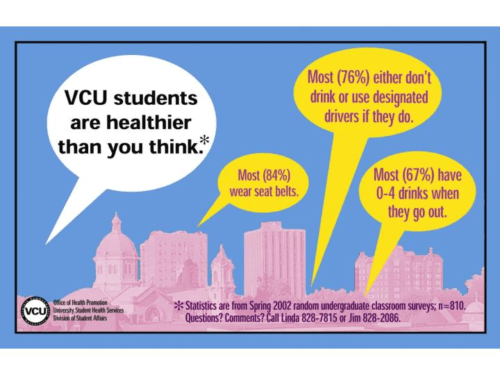

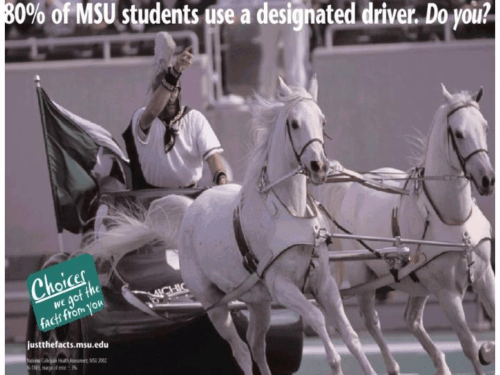


More reading
Social marketing: Behavior change for social good
The latest sixth edition of this book provides a ten-step social marketing planning model. It is a definitive guide for health promoters. It gives us real case studies. Nancy Bestselling authors Nancy R. Lee and Philip Kotler have co-authored the book.
Applying Social Norms Theory: A New Framework
Questioning the social norms approach in a university setting;
This study shows that female students respond more favourably to social norms intervention than their male counterparts.
